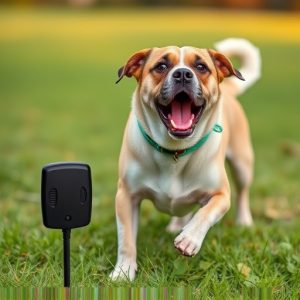Handheld Dog Deterrents: Effective Carrying & Training Tips for Owners
Handheld dog deterrents, offering a non-violent solution for unwanted canine behaviors like excessiv…….
Handheld dog deterrents, offering a non-violent solution for unwanted canine behaviors like excessive barking, come in various carrying methods tailored to different user preferences and training approaches. Crucial handling techniques include firm grip with thumb on the trigger, suitable positioning (e.g., waist level for public spaces), and secure storage out of children's and other pets' reach when not in use. Training requires patience, consistency, responsible usage, and adherence to manufacturer guidelines. Effective carrying methods, such as holsters or waist belts, enhance safety and control during walks or training sessions.
“In today’s bustling world, effective pet care remains a top priority for dog owners. One innovative solution gaining traction is the handheld dog deterrent device, designed to prevent barking without resorting to traditional punishment methods. This article delves into the intricacies of these devices, offering insights on understanding their functionality, optimal carrying techniques, and essential training tips for responsible use. By exploring effective carrying methods, you can maximize prevention while fostering a harmonious bond with your furry companion.”
- Understanding Handheld Dog Deterrent Devices
- Effective Carrying Methods for Maximum Prevention
- Training and Safety Tips for Responsible Use
Understanding Handheld Dog Deterrent Devices
Handheld dog deterrents, also known as electronic pet training aids, are innovative tools designed to correct unwanted canine behaviors like barking excessively. These devices emit a high-frequency sound or gentle vibration when triggered by the dog’s barking, serving as a non-violent deterrent. They’re typically small and portable, making them convenient for various settings, from homes to parks.
Different models offer diverse carrying methods to suit users’ preferences. Some are designed to be attached to a dog’s collar, while others can be handheld or even integrated into a belt clip or keyring, ensuring easy accessibility when needed. This versatility allows owners to choose the option that best fits their lifestyle and training approach.
Effective Carrying Methods for Maximum Prevention
When carrying a handheld dog deterrent, proper technique is key to ensuring its effectiveness. One of the most important considerations is hand placement – hold the device firmly in your dominant hand, with your thumb resting on the trigger or activation button for quick access. This allows you to keep a firm grip while also enabling rapid deployment when needed.
For maximum prevention, consider different carrying methods depending on your environment and activity. For instance, during walks in public spaces, keep the device at waist level, close to your side, for easy retrieval without drawing too much attention. If you’re in remote areas or hiking trails, a belt pouch can be ideal – it keeps the device secure and readily accessible while leaving your hands free to handle other tasks. Always remember to store the device out of reach of children and pets when not in use.
Training and Safety Tips for Responsible Use
Training your dog to respond to the electronic handheld device requires patience and consistency. Start by introducing the device as a positive reinforcement tool, rewarding calm behavior with treats or praise when they sense its activation. Gradually increase sensitivity levels during training sessions, ensuring the device’s settings are adjusted to avoid unexpected shocks. Always use the device responsibly, following manufacturer guidelines for safe usage.
When carrying the handheld dog deterrent, opt for secure and comfortable methods like holsters or waist belts designed specifically for this purpose. Avoid leaving it in easily accessible places, especially around young children or other pets, to prevent accidental activation or misuse. Regularly inspect the device for any damage and ensure proper maintenance to guarantee its reliable operation during walks or training sessions.
Handheld dog deterrents can be effective tools for preventing barking, but responsible use is key. By understanding the device’s functionality and employing optimal carrying methods, as outlined in this article, you can ensure maximum prevention while maintaining a safe and humane approach to canine behavior management. Remember, proper training and adherence to safety tips are essential when utilizing any electronic device around pets.


